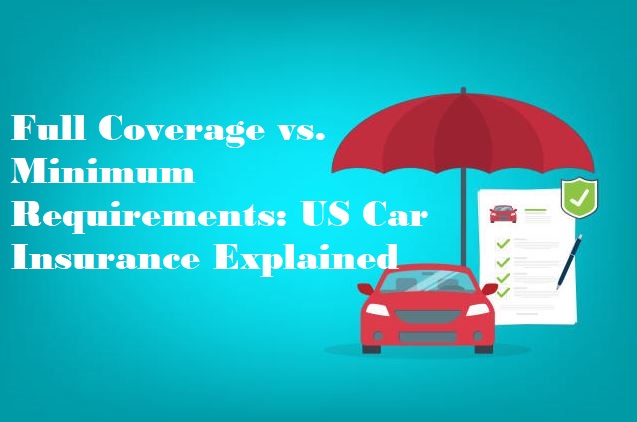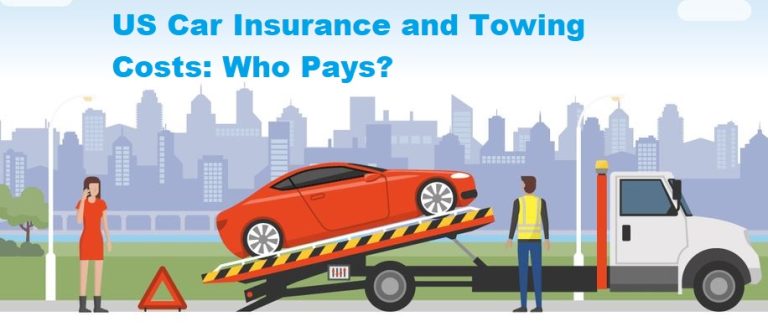Driving a car in the US comes with a responsibility to have insurance. But with various coverage options available, navigating the world of car insurance can be confusing. This article explores the key differences between full coverage and minimum requirement car insurance to help you make an informed decision.

Understanding Minimum Requirements
Every state mandates a minimum level of car insurance liability coverage. This covers injuries and property damage you cause to others in an accident. The minimum limits vary by state, typically specified as a format like 15/30/5, which translates to:
- $15,000 bodily injury coverage per person injured in an accident
- $30,000 bodily injury coverage per accident (total for all injured)
- $5,000 property damage coverage per accident
What Full Coverage Offers
While minimum requirements protect others, they don’t safeguard your own vehicle. Full coverage, however, typically incorporates the following:
- Collision Coverage: This pays for repairs to your car if you hit another object or vehicle, regardless of fault.
- Comprehensive Coverage: This covers damage to your car caused by events other than collisions, such as theft, vandalism, fire, or weather.
In some cases, full coverage might also include:
- Higher Liability Limits: You can opt for higher coverage amounts than the state minimum to protect yourself from significant financial burdens in severe accidents.
- Uninsured/Underinsured Motorist Coverage: This protects you if the driver who hits you lacks adequate insurance or doesn’t have any at all.
Choosing the Right Coverage
The ideal insurance depends on your individual circumstances. Here’s a breakdown to help you decide:
- Minimum Requirements: A good option for older vehicles with low value, especially if you can afford to cover repair costs yourself. However, this leaves you financially vulnerable if your car is damaged.
- Full Coverage: Advisable for newer cars with high value, financed vehicles (where lenders often require it), or if you want peace of mind knowing your car is protected in most scenarios.
Additional Factors to Consider
- Your Driving Record: A clean driving record can lead to lower premiums for both minimum and full coverage.
- Your Age: Young drivers typically pay higher premiums.
- Your Location: Urban areas with higher collision risks might have costlier insurance.
The Takeaway
Understanding the difference between minimum requirements and full coverage car insurance is crucial. While minimum coverage meets legal obligations, it doesn’t safeguard your car. Full coverage offers broader protection but comes at a higher cost. Consider your car’s value, financial situation, and risk tolerance when making your choice. It’s always wise to compare quotes from multiple insurers to find the most affordable option that meets your needs.
Understanding Minimum Requirements: A Bare Minimum Shield
Every state mandates a minimum level of car insurance liability coverage. Imagine you cause an accident – this coverage pays for injuries and property damage inflicted on others involved. The minimum limits vary by state, but they typically follow a format like 15/30/5, which translates to:
- $15,000 bodily injury coverage per person injured (This means your insurance will cover up to $15,000 in medical expenses for each person you injure in the accident.)
- $30,000 bodily injury coverage per accident (This is the total amount your insurance will cover for all injured people in the accident, regardless of how many.)
- $5,000 property damage coverage per accident (This covers repairs to damaged property belonging to others, like their car or mailbox.)
Minimum coverage fulfills the legal requirement, but it’s important to understand its limitations. It only protects others – your car is left vulnerable. If your car gets damaged in an accident (even if it’s your fault), or stolen, or suffers hail damage, you’ll be responsible for the repair or replacement costs out of pocket.
Full Coverage: A Safety Net for Your Car
Full coverage goes beyond the state-mandated minimum. It’s like an umbrella that shields your car from various financial storms. Here’s what it typically includes:
- Collision Coverage: This acts as your knight in shining armor if you hit another object or vehicle, regardless of who’s at fault. It covers the repair costs to get your car back on the road.
- Comprehensive Coverage: This superhero swoops in to save the day when your car suffers damage from non-collision events. Theft, vandalism, fire, weather (hail, falling objects), and even contact with animals are all covered under comprehensive insurance.
In some cases, full coverage might also encompass:
- Higher Liability Limits: You can choose coverage amounts exceeding the state minimum. This is a wise move, as severe accidents can easily surpass the minimum limits, leaving you responsible for remaining medical bills.
- Uninsured/Underinsured Motorist Coverage (UM/UIM): This acts as your guardian angel in scenarios where the driver who hits you has no insurance (uninsured) or not enough to cover the damages (underinsured).
Choosing the Right Coverage: Tailoring Your Insurance Needs
The ideal car insurance depends on your unique circumstances. Here’s a breakdown to guide you:
- Minimum Requirements: This might be suitable for older, less valuable vehicles, particularly if you have the financial buffer to cover repair costs yourself. However, remember, this leaves your car financially exposed.
- Full Coverage: This is highly recommended for newer cars with high value, financed vehicles (often mandated by lenders), or if you want peace of mind knowing your car is protected in most situations.
Beyond the Basics: Additional Factors to Consider
When making your decision, don’t forget these additional factors:
- Driving Record: A clean driving record with no accidents or violations translates to lower premiums for both minimum and full coverage.
- Age: Young drivers, statistically more prone to accidents, typically face higher premiums.
- Location: Urban areas with higher collision risks might have costlier insurance compared to rural areas.
The Bottom Line: Make an Informed Choice
Understanding the difference between minimum requirements and full coverage car insurance empowers you to make an informed decision. While minimum coverage meets legal obligations, it doesn’t safeguard your car. Full coverage offers comprehensive protection but comes at a higher cost. Weigh your car’s value, financial situation, and risk tolerance before choosing. It’s always recommended to compare quotes from multiple insurers to find the most affordable option that fulfills your needs. Remember, car insurance is an investment in your financial security and peace of mind on the road.






